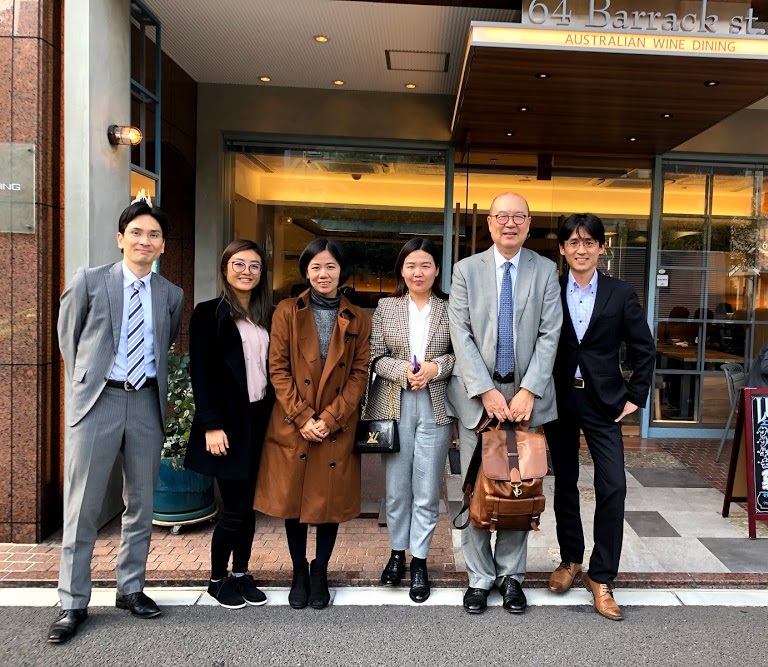
11月某日、中国の代理人であるGe Cheng & Co LTDのMr. David W. Cheng、Ms. Joanna ZhuおよびMs. Freya Liu、3名にご来所いただきました。
ランチをご一緒した際に中国の「キャッシュレス社会」についてお話しを伺いました。
中国では、「Alipay」や「WeChatPay」といったスマートフォンアプリを使ったQRコード決済が主流のため、現金を持ち歩かないそうです。彼らの話によると、キャッシュレス化は中国全土で広がっており、街の至る所(個人間、タクシー、コンビニ、公共交通機関、屋台でも)でQRコード決済を利用することができ、生活の一部であると述べていました。
一方、日本はどうでしょうか?
日本では中国ほどキャッシュレス化が進展しておらず、キャッシュレス化の遅れる日本についての記事をよく見かけます。
外国人が訪日した際、高額紙幣を持ち歩いていませんでしたか?
調べたところ、経済産業省が今年4月に公表した「キャッシュレス・ビジョン」という資料を発見しました。
(http://www.meti.go.jp/press/2018/04/20180411001/20180411001-1.pdf)。
この「キャッシュレス・ビジョン」においては、「各国の実例」、「日本の現状」、「店舗側のジレンマ」、「消費者」、「今後の取組み」などそれぞれの視点からまとめられており大変興味深い資料でした。
ちなみに、資料内の「各国のキャッシュレス決済比率状況」によると、
韓国(89.1%)、
中国(60.0%)、
カナダ(55.4%)、
イギリス(54.9%)、
オーストラリア(51.0%)、
アメリカ(45.0%)、
日本(18.4%) と、日本のキャッシュレス決済率がとても低いことがわかりました。
日本が諸外国と比べ、キャッシュレス化の普及が遅れる理由として、主に、以下が考えられるそうです。
①落としたお財布は戻ってくるといわれるような治安の良さ
②現金に対する信頼性の高さ、高額紙幣の精巧さ故、偽造が少ないこと
③ATMの利便性が高い(いつでも現金の入手が可能)
現金で生活をすることにもメリット・デメリットあるように、キャッシュレス化においてもメリット・デメリットがあるでしょう。しかし、個人的にはキャッシュレス化に賛成です。日本のキャッシュレス化社会のために1日でも早くプラットフォームが整い、
消費者、店舗側、企業双方にとって、より良い効果を生み出すことができればいいなと思いました。
(写真)
左から:山本弁理士、筆者、Ms. Joanna Zhu、Ms. Freya Liu、Mr. David W. Cheng、そして江部弁理士
********************************************************************************************************************************************************************************
In November 2018, Mr. David W. Cheng, Ms. Joanna Zhu, and Ms. Freya Liu of Chinese Law firm, Ge Cheng & Co LTD visited our office.
I joined the lunch with the colleagues and we had a conversation about a “cashless society” in China.
They said that their lifestyle changed because a QR code payment (mobile payment) by “Alipay” or “WeChatPay” of applications for Smartphone has became the mainstream among the Chinese. Therefore, the Chinese tend to be carrying no cash. According to them, the cashless transaction has been expanded throughout China, and people use the transaction everywhere such as individual, taxis, convenience stores, transportation, and even food stall. They said that it is very convenience and a part of their life.
How about Japan? I think that our society is changing very slowly to move to cashless. You will remind that you have been required carrying huge amounts of cash during your travel around Japan. I found an interesting written document, “Cashless Vision” which was published by Ministry of Economy, Trade and Industry (METI) in April 2018.(This document is only in Japanese :
http://www.meti.go.jp/press/2018/04/20180411001/20180411001-1.pdf)
According to Table 4 of “cashless payment ratio of each country” (p. 10) of the document “Cashless Vision”, it shows as follows. You see that the ratio shows a quite interesting result that Japan is a cash basis.
Korea - 89.1%
China – 60.0%
Canada – 55.4%
UK - 54.9%
Australia – 51.0%
Sweden – 48.6%
USA – 45.0%
~
Japan – 18.4%
The document “Cashless Vision” notes the reasons why the cashless payment is delayed to familiarize in Japan as followings;
1) A safe country as a lost wallet is usually returned to the owner.
2) High reliability and technical sophistication to Japanese Yen and there are less forgery bills.
3) Having high convenience for consumer by ATM.
Having life with carrying cash has their advantages and drawbacks but being the cashless society also has their advantages and drawbacks. I agree to make progress of the cashless society in Japan because I think it will be convenience to manage the money. I hope platforms for the cashless transaction in Japan would complete even a day earlier, and the cashless transaction would bring good influences among consumer, stores, companies, and countries.
(Photo)
Left to Right: Mr. Yamamoto, this article writer, Ms. Joanna Zhu, Ms. Freya Liu, Mr. David W. Cheng, and Mr. Ebe